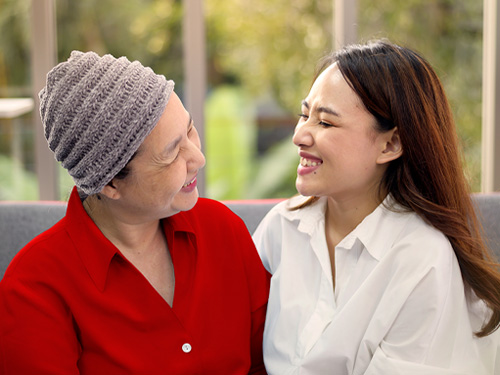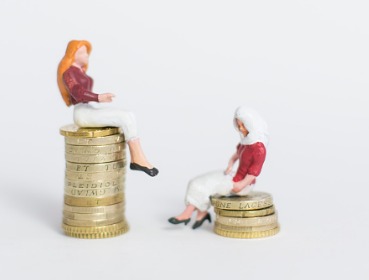Hotter than ever
The impact of rising temperatures on our skin
The Doomsday Clock is ticking faster than ever, with its hands now just 90 seconds away from midnight. A symbolic representation of our impending doom, it's a stark reminder that time is running out to save the world from the ravages of climate change.
As we search for answers, the concept of "net zero" has since gained increased attention as a mitigating solution.
But like all simple slogans, the reality of achieving it is far more complicated.
We're in for a sweltering future with peak temperatures of 40 degrees celsius potentially appearing as early as 2045. The effects of such a slight increase in temperature are already being felt, in ways that we may not immediately notice. News flash – it’s only going to get worse with each passing generation.
The equation for a healthy planet
Net zero is the ambitious goal that the international community has set to mitigate global warming in the second half of the century. It's a commitment to balance the scales of the greenhouse gases we produce and the ones we remove.
Scientists estimate that limiting warming to 1.5 degrees celsius would reduce the likelihood of irreversible climate effects. However, embracing, enacting and scaling a negative-emissions plan to get to net zero is an enormous undertaking. Such a pathway would require dramatic emissions reductions from every sector of the economy over the next ten years—starting now.
The road to net zero
The world is already feeling the heat, with temperatures rising by a staggering 1.3 degrees celsius. Yet, efforts to meet the Paris targets haven’t been swift enough and we slip further away from reaching this critical target.
A recent report from the U.N. Environment Programme paints a dire picture, with current climate policies set to result in temperatures soaring to 2.8 degrees celsius by the end of the century. And even with all promises kept, the future looks only slightly less grim, with temperatures still projected to rise by 1.8 degrees celsius.
Navigating the road ahead
Singapore like the rest of the world, is trying to achieve net zero emissions. The government has implemented measures to optimise energy efficiency for businesses and households alike. So how great are the challenges that loom? Achieving net-zero emissions by 2050 will be a significant challenge, requiring a reduction of 1.4 GtCO2 per year, a feat comparable to the decrease during Covid-19 lockdowns. Navigating this journey demands substantial resources and investment, and will test our resolve as we strive for a sustainable future.
We are all on borrowed time
The weather in Singapore is changing. The annual mean temperature has since increased from 26.9°C to 28.0°C. Heat waves are becoming more intense—and they're not just uncomfortable; they're dangerous.
But beyond the immediate dangers of heat, there are long-term impacts. From dry, itchy, and irritated skin to an increased risk of skin cancer, the effects of climate change on our skin are undeniable.
Climate change has lead to a slew of skin infections, rashes, and even life-threatening diseases. And the scariest of all – the once-protective ozone layer is thinning. More than before, UV rays are silently penetrating our skin, leaving us vulnerable to skin cancer and other age-related skin conditions.
There are three major types of skin cancer. What are the differences between them and what are some of the signs and symptoms?
1. Basal cell carcinoma – the most common form of skin cancer
The most easily treated and the least likely to spread, it typically appears as one of the following:
- A pearly or waxy bump on your face, ears or neck
- A flat, flesh-colored or brown scar-like lesion on your chest or back
2. Squamous cell carcinoma
This type of skin cancer is slightly more like to spread than basal cell carcinoma, but it’s still easily treatable if detected early. It often appears as one of the following:
- A firm, red nodule on your face, lips, ears, neck, hands or arms
- A flat lesion with a scaly, crusted surface on your face, ears, neck, hands or arms
3. Melanoma – the deadliest form that accounts for the majority of skin cancer deaths.
This cancer can lurk anywhere on our bodies, hiding in plain sight on otherwise normal skin or within a mole. Warning signs include:
- A large brownish spot with darker speckles
- A simple mole that changes in appearance or that bleeds
- A small growth with an irregular border and coloured spots
- Shiny, firm, dome-shaped bumps
- Dark patches on your palms, soles, fingertips and toes, or on mucous membranes
Skin cancer can appear without warning. If you notice any suspicious growth or change of the growth on your skin, don’t hesitate to consult your doctor right away.
If you don’t wanna be skinned, alive, do it right
With the National Environment Agency reporting an average daily UV index of six to nine, it's no wonder that skin cancer is among the top 10 most common cancers here in our city-state.
Good news is, most skin cancers can be prevented. And with early detection, you can receive successful treatment for most skin cancers, even the most aggressive forms.
Sunscreen is your first line of defense, but alarmingly, only 23.9% of Singaporeans use it regularly. This may be due to the mistaken belief that we spend most of our time indoors. But, UV rays can penetrate windows and clouds, making it necessary to be protected at all times. And don't think your foundation's SPF will cut it, as it's not enough.
The SPF number on your sunscreen only indicates the level of protection against UVB rays that cause sunburn and surface-level skin cancers. The actual protection duration varies for each individual based on the amount of melanin in their skin and the time it takes for their skin to get sunburnt.
So, what makes the real difference? It's all about application. A high-end SPF product will be useless if not applied in adequate quantity or frequently enough. Experts recommend at least a quarter of a teaspoon for your face and a shot glass worth for your entire body, and to reapply throughout the day.
So next time you grab that bottle of sunscreen, remember it's not just the SPF number that matters, it's how you use it that counts.
The future may be uncertain, but your skin health isn’t
With the future of emissions reduction uncertain, it's time to be certain of one thing – let’s change our habits and make sunscreen a daily routine. Don't forget to support your sunscreen with other sun-protective measures, such as wearing clothes that shield your skin, and using hats and umbrellas. However, even with these precautions, there's no denying the risk of critical illnesses that come with the changing climate.
Let’s take the reins and shape our future before the consequences become too scorching to handle.
Let us match you with a qualified financial representative
Our financial representative will answer any questions you may have about our products and planning.








